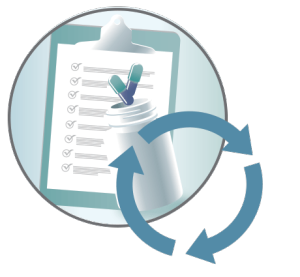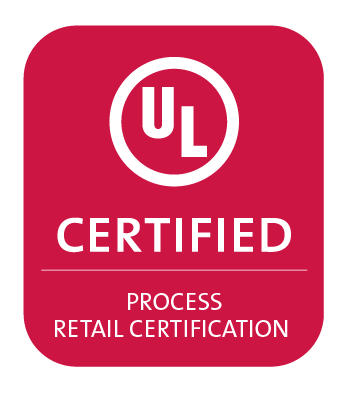
The analytical testing of intermediate and finished drug products is a critical part of the drug development process, as it is essential to ensuring the safety and efficacy of the final product. Often the location of the testing needs to shift to another site within the company (to support scale-up and commercial activities) or outside the company to a CMO (for scheduling or cost-cutting purposes). If the products need to be tested and released at another facility, FDA guidance states the method needs to be officially transferred to the new location, where similar analytical results need to be generated. The originator laboratory can avoid lengthy delays by drafting an analytical method transfer that ensures the receiving laboratory possesses and demonstrates the capability, knowledge, and consistency to test the material as intended.
Whether the transfer occurs within the same organization or between different organizations, there are several challenges a company can face during this process. One of the biggest challenges of an analytical method transfer is ensuring end-to-end consistency of the testing process from one lab to another. This can be ensured by drafting an effective method transfer protocol. Doing this requires establishing communication early in the process and maintaining it through completion of the transfer. Without proper preparation and early communication, both the originating and receiving laboratories run the risk of method inconsistencies that could affect both the accuracy and efficiency of the testing.
The following steps will help guide the process of completing a successful analytical method transfer. By adhering to them, both laboratories can avoid common missteps, thereby removing any barriers to progressing the drug to the next phase in its development and commercialization.
 1. Open The Lines Of Communication…And Never Close Them
1. Open The Lines Of Communication…And Never Close ThemIn order to have the protocol ready at the time of the transfer, conversations between all parties involved should begin at least two months prior to the execution of the transfer. This will likely involve a representative from each of the organizations’ quality assurance teams and the management from each laboratory. The originator laboratory should schedule an initial meeting with the receiving laboratory and provide a copy of its testing methods. The receiving laboratory can then review the method(s) and determine what questions it may have regarding the specific procedures involved. This also gives it an opportunity to determine what supplies, chemicals, reagents, etc. it might need to purchase in order to successfully run each method. Areas that may need to be discussed or questioned are the small method-specific techniques that may not be handled in the exact same way between two different laboratories.
For example, this could be anything from weighing a blend sample a specific way (e.g., rinsing contents and then weighing the dried container, or dry transferring the powder and getting a tare weight) to detailing instructions on how to shake a sample preparation. Because any discrepancy in practice can have negative effects on the transfer, and thus the overall project timelines, nothing can be assumed during the process. This is why every detail, especially any gray areas, needs to be reviewed and discussed. This can also include details when reviewing the required instrumentation. To avoid a possible variation in the analytical results, instrument equivalency should be discussed and verified. Overall, the originator laboratory could have specific techniques or equipment that are preferred over others, and not using these could have a significant impact on the acquired transfer data. Without these early conversations, costly mistakes can occur, resulting in time-consuming investigations, corrective actions/preventive actions (CAPAs), and low laboratory confidence.
Part of early preparation also includes creating a timeline for completion of the transfer, taking into consideration any time needed for additional training, ordering of equipment (if the receiving lab does not have the same instruments on hand as those being used by the originator), as well as reviews and approvals. This timeline must be managed by both laboratories throughout the process.
Once there has been an initial meeting to address any questions or concerns as well as to establish a timeline for completion, the originator laboratory can begin drafting its method transfer protocol.
 2. Draft A Clear And Effective Protocol
2. Draft A Clear And Effective ProtocolA robust method transfer protocol should include the following sections (further recommendations can be found in current FDA guidance as well as USP chapter <1224>):
• Introduction – this includes the name of the originator laboratory, receiving laboratory, the drug being transferred, and its dosage form.
• Objective – this details the goal of the protocol, which is to complete a test at each of the laboratories using the methods outlined in the protocol. The objective also includes what dosages should be tested.
• Methods and Materials – this includes the details associated with the specific methods to be transferred (including their name and nomenclature) and their specific material requirements.
• Experimental Design – this provides the details of each test, including what samples should be tested (from which lot, of what potency, etc.), the conditions under which they should be tested (duration, temperature, etc.), and what procedure in the protocol should be used. If there are multiple potencies, a bracketing, risk-based approach can be used to save time and increase efficiency.
• Qualification Criteria – the acceptance criteria for each test is provided in this section. The results from both labs should meet the specified criteria for the product. The acceptance criteria (the limits around the testing) are usually defined by the originator laboratory/company and what it believes is a practical, yet robust, limit that well defines the characteristics of the methods. This should be based on the analytical history of the drug and the known performance of the methods.
• Management of Results – this includes who is responsible for reviewing and evaluating the results, as well as what should occur if the results do not meet the qualification criteria.
• Documentation – this outlines the documentation practices of raw data generation, changes to the protocol, and how the final report should be written, reviewed, and approved.
• Storage of Records and Raw Data – as it implies, this section indicates where the records, protocols, final report, and raw data of the transfer will be stored. Each site should store these documents per their own archiving procedures.
Communication between both parties should continue throughout the process of writing the protocol. Typically, the lab director from each laboratory drafts the protocol, and it will be exchanged back and forth until final approval is received from the quality assurance representative and laboratory representative at each site.
 3. Establish Familiarity With The Dosage Form And Methodology
3. Establish Familiarity With The Dosage Form And MethodologyOnce the method transfer protocol is complete, it is a good idea for the receiving lab to become familiar with the methods and how the dosage form in question performs analytically. This can be done by completing a series of experimental “test runs” of the method or methods being considered for transfer. Doing so ensures familiarity with the dosage form and methodology prior to the transfer. This can help avoid future delays and issues after the method is implemented. Time should be allowed to include these tests in the build-up to the running of the official protocol.
The amount of time that should be budgeted for this is based on the complexity of the methods and the number of methods to be transferred. The number of test runs completed is determined by laboratory management, who will use the tests to determine the competence of their staff with the new methods. Some may need many tests and some may need only one (or none). Again, open discussion is key to ironing out any observed discrepancies or technical observations found during the test run(s).
As stated in its guidance on analytical method transfers, the FDA requires the analytical method transfer protocol to be submitted as part of a well-written regulatory filing. It is not submitted on its own but is typically added to an NDA or ANDA on file with the FDA as either part of a yearly update or a prior approval supplement, if deemed necessary.
Overall, executing a successful method transfer protocol requires a considerable amount of time and communication from all parties involved. By establishing a reasonable timeline and clear expectations from the beginning, both teams are building not just confidence in the laboratory results but also a solid foundation for the future of a drug’s developmental process. A well-transferred method ensures compliance and reproducible results and provides the evidence that the initial expectation of quality carries on between the various sites involved in bringing the final dosage form to the patient.
Article by: JOHN FRANKONIS
Download the File





